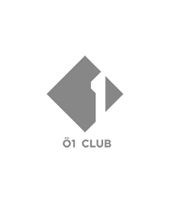ROBERT KLOSS, Terzetta, 1922 (Detail) © Sammlung Oesterreichische Nationalbank, Foto: Graphisches Atelier Neumann
16.09.2022 - 06.02.2023
HAGENBUND
From moderate
to radical Modernism
The artists’ association Hagenbund was founded in 1900, like the Vienna Secession three years previously, as a response to the conservatism of the Künstlerhaus. Latest by the 1920s, it had established itself as “today’s most radical group” (Robert Musil, 1922) among the three major Viennese artists’ associations. The association’s name was derived from Josef Haagen, the proprietor of the inn “Zum blauen Freihaus” on Gumpendorfer Strasse in Vienna, which had been a popular meeting place amongst artists since the 1880s. By the time Gustav Klimt had left the Secession in 1905, and the Kunstschau exhibitions had been held in Vienna in 1908 and 1909, the Hagenbund’s exhibition venue in Vienna’s first district had become the leading platform for young, progressive art.
JOHANN VICTOR KRÄMER, Members of the Hagengesellschaft, 1886/87 © Albertina, Vienna, photo: Albertina, Vienna
“The Hagenbund aims to foster camaraderie between living artists; rather than a direction, it represents a mindset.”
Hans Tietze
Their venue, a former market hall on Zedlitzgasse, which the architect and co-founder of the Hagenbund Joseph Urban had converted within only a few months and decorated in keeping with Jugendstil, afforded young talents, such as Anton Hanak (in 1902/03), the opportunity to present their works early on. The presentation of works by the artist known as “Chief Wildling”, Oskar Kokoschka, as part of the special exhibition of painting and sculpture Sonderausstellung Malerei und Plastik in 1911, caused a public scandal. Despite all the opposition, including that of the heir to the throne Archduke Franz Ferdinand, the association continued along this radical path in its 1912 spring exhibition, showing works by Anton Kolig, Anton Faistauer, Albert Paris Gütersloh and the only 21-year-old Egon Schiele.
The progressive creative drive of individual Hagenbund members – whose “extreme Modernism” or “Hypermodernism” led to controversies both within the association and in public – remained unbroken. When Georg Merkel, Fritz Schwarz-Waldegg, Maximilian Reinitz, Robert Philippi, Josef Floch, Ludwig Heinrich Jungnickel, Viktor Tischler, Robert Kloss, Robert Pajer-Gartegen, Georg Jung, Erwin Lang, Georg Mayer-Marton, Viktor Planckh, Franz Lerch oder Georg Philipp Wörlen joined the Hagenbund between 1920 and 1930, the Viennese Jugendstil of the fin-de-siècle gave way to modernist tendencies. The 1920s, especially, are considered the Hagenbund’s heyday, when its members crossed the threshold from moderate to radical Modernism.
The Salzburg painter Georg Jung was among the most extraordinary artists of the Hagenbund. Already as a child, he developed a keen interest in drawing, as he was surrounded by prominent artists who resided in his family’s ‘Hotel de l’Europe’ during the Salzburg Festival. Even so, he chose to study medicine after World War I, though he also attended an evening class in nude painting at the Vienna School of Arts and Crafts.
His work The Fallacy, created in 1920/21, marks the beginning of Georg Jung’s artistic oeuvre. It shows shapes, which on closer inspection turn out to be human figures, moving through time and space in circular movements. They appear as if swept up by an external force into a vortex. A warm yellow-red zone is contrasted with a cool blue one. Condensed elliptical pathways of light and energy increase the work’s dynamics in the manner of futuristic lines of force.
 GEORG JUNG, The Fallacy, 1920/21 © Private collection, Salzburg, photo: Private collection, Salzburg © Bildrecht, Wien 2022
GEORG JUNG, The Fallacy, 1920/21 © Private collection, Salzburg, photo: Private collection, Salzburg © Bildrecht, Wien 2022
While the genres represented in the association were highly diverse, and included painting, graphic art, sculpture, architecture and artisan craftwork, painting asserted itself over time as the leading medium. In terms of motifs, the artists focused primarily on the metropolis, with its crowds of people, market halls, factories and places of public entertainment, as well as on the precarious social, political and economic realities of life during the interwar period. Artists including Karl Hauk, Carry Hauser, Bettina Ehrlich-Bauer and Otto Rudolf Schatz captured these new realties in a sober but haunting manner on paper and canvas. Their motifs also reflected the situation of the association and its members, who in the 1920s found themselves unable to heat their exhibition venue or carry out urgent maintenance work. At the height of the Great Depression, the artists resorted to exchanging paintings for food.
- Otto Rudolf Schatz, who from the late 1920s increasingly focused on the urban themes of his time, rendered the oppressive reality of life of the Vienna Prater and demi-monde in large-scale nudes and stage scenes of impressive presence and sobriety. Schatz placed three naked or scantily clad women with pageboy hairstyles, along with an austere-looking male figure in the background, into a stage-like context which ultimately remains undefined. That the depicted figures, rendered in the sober style of New Objectivity, look towards the beholder with an entirely impassive and numb gaze emphasizes the work’s voyeuristic character. This play with the sexual mindscapes of an imaginary audience, as well as the theme of the discrimination and exploitation of people on the fringe of society, were among Schatz’s leitmotifs.
- Carry Hauser’s iconic 1927 painting of three jazz musicians must be viewed in a socio-political light. With his multi-ethnic jazz band, he memorialized the new music, its intercontinental reception and especially the new attitude towards life associated with it. Already at the beginning of the 1920s, Vienna had a surprisingly vibrant jazz scene. Composers like Robert Stolz and Josef Hauer explored the “latest sensational dance from America” with great interest, while Ernst Krenek’s opera "Jonny spielt auf" [Johnny Strikes Up the Band] premiered at the Vienna State Opera on New Year’s Eve of 1927/28. In a feature in 1924, the author Alfred Polgar revealed jazz’s formula: “Syncopation is a symbol of our wayward times, the symbol of an unraveling world.”
The openness towards international memberships and cooperations would remain a characteristic of the Hagenbund beyond World War I, and extended to guest exhibitions by artists from the former crown territories, including Moravia (1925), Ljubljana (1927) and Budapest (1928), as well as from Russia (1930), Belgium (1936) and Latvia (1937). The 55th Hagenbund exhibition, held in December 1927, featured graphic works by French artists including Georges Braque, Robert Delaunay, André Derain, Henri Matisse and Maurice Vlaminck, the Spanish artists active in France Juan Gris and Pablo Picasso, as well as the Russia-born Marc Chagall.
The Hagenbund’s opening exhibition in 1902 already featured two female artists as guests – Leona Abel, who had studied under Carl Moll, and the painter Emilie Mediz-Pelikan. The Hagenbund further placed the Zedlitzhalle at the disposal of the Vereinigung bildender Künstlerinnen Österreichs (VBKÖ) [Austrian Association of Women Artists] in 1911 for the first of a series of exhibitions, which were also used as a platform for the Verband bildender Künstlerinnen und Kunsthandwerkerinnen, known as “Wiener Frauenkunst” [Viennese Women’s Art]. From 1924 – some 20 years ahead of the Vienna Secession – the Hagenbund granted women, among them Bettina Ehrlich-Bauer, Johanna Kampmann-Freund, Anny Schröder Ehrenfest and Lilly Steiner, the status of “corresponding” and “associate” members.
 LILLY STEINER, Portrait of Lilian Gaertner, 1927 © Private collection, Photo: Galerie Widder, Vienna
LILLY STEINER, Portrait of Lilian Gaertner, 1927 © Private collection, Photo: Galerie Widder, Vienna
Lilly Steiner was among the few female artists in Vienna who received an invitation to join the Hagenbund as an associate member. The Viennese painter and producer of printed graphic works exhibited with the Hagenbund already in 1908. In 1910, Adolf Loos designed Haus Steiner in Vienna’s 13th district for the artist and her husband. Artists like Egon Schiele were frequent guests at their house’s salon.
In 1927, Lilly Steiner moved with her family to Paris, where she acted as a mediator between the artists’ networks in Vienna and Paris. Her Expressionist Portrait of Lilian Gaertner, which was created that year, likely shows a fellow artist from Vienna. Through the interplay of colors and body language, Steiner intensified the work’s artistic expression and emotional excitement.
Throughout the almost four decades of its existence, the Hagenbund experienced a highly changeful history shaped by various political systems, such as the transition from a monarchy to the First Austrian Republic, and from the Austrofascist corporate state to the seizure of power by the National Socialists. The latter prompted the association’s dissolution in September 1938 owing to its modern and liberal artistic notions, the large number of artists with Jewish roots as well as its portion of left-wing members. Many of the Hagenbund’s members, including Georg and Bettina Ehrlich-Bauer, Josef Floch, Carry Hauser, Lilly Steiner, Otto Rudolf Schatz and Felix Albrecht Harta, had to emigrate, while others – like Robert Kohl and Fritz Schwarz-Waldegg – were murdered in concentration camps.
This spelled the end of the Hagenbund’s cosmopolitan and intercultural spirit. When the Zedlitzhalle, which had suffered severe damage during World War II, was demolished in 1965, this eminent Viennese artists’ association, which had counted some 260 members throughout the almost 38 years of its existence, lost its architectural reference point. As part of a special exhibition the Leopold Museum presents the Hagenbund’s most outstanding positions, showcasing its moderately modernist beginnings in the wake of the Secession through to the ground-breaking avant-gardist achievements of the 1920s and 30s. The presentation will include numerous works from private Austrian collections that have never been publicly shown before.
Curators: Dominik Papst, Stefan Üner, Hans-Peter Wipplinger
GET YOUR TICKETS!
- Ludwig Ferdinand Graf played an essential part in helping the Hagenbund regain its strength after 1918 and became one of the association’s most eminent protagonists. With his 1912 work "The Decameron" he memorialized the eponymous collection of novellas by the famous 14th-century Italian poet Giovanni Boccaccio. For ten days, seven ladies and three gentlemen tell each other tales of love and a zest for life in a country estate while the Plague is ranging beyond.
Ernst Décsey commented on the work: “New emotions, new colors! The narrator appears huddled on the floor, the punchlines percolating from his illustrative fingertips. The seven or eight ladies, sitting in a circle around him, are listening, each in their own way – coyly, prudishly, wantonly or naively." - For the painter Josef Floch, the Hagenbund provided the stepping stone for an international career. Although he moved to Paris in 1925, where he exhibited his works to great acclaim, the artist was allowed to keep his membership with the Hagenbund, which he had held since 1920. Among his circle of friends were the Paris avant-gardists Balthus, Chana Orloff and Jacques Lipchitz, while Floch promoted the young Viennese artist Franziska Zach.
It was said of Floch’s paintings that they revealed “the flowing tenderness of this sentiment”. This also holds true for his double portrait of an unknown brother and sister. Floch captured the personalities of the children in an expressive yet subtle manner. The direction of their gaze and their gestures, as well as the reticent, nuanced colors, invest the portrait with a calm, slightly melancholy character.





